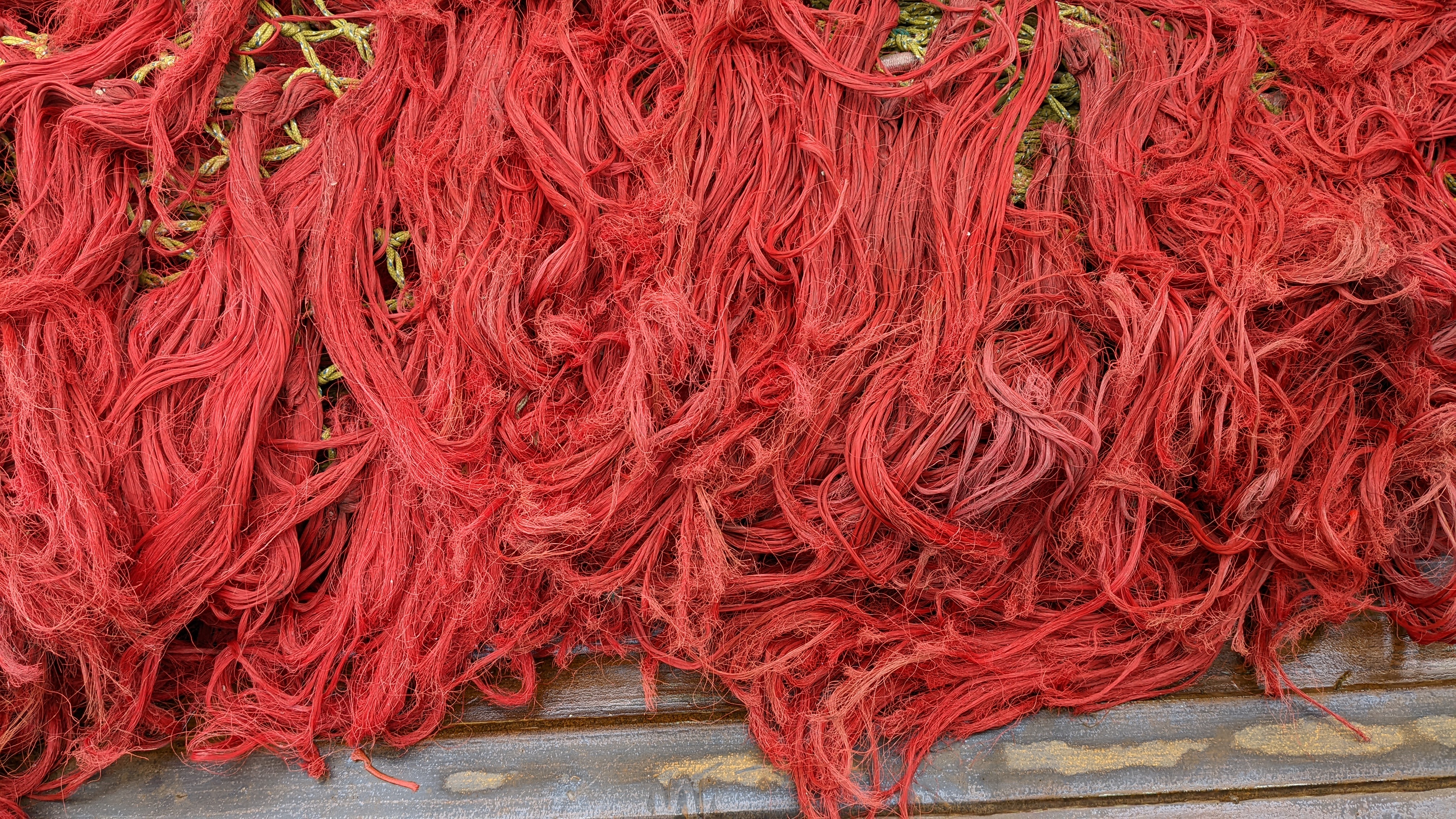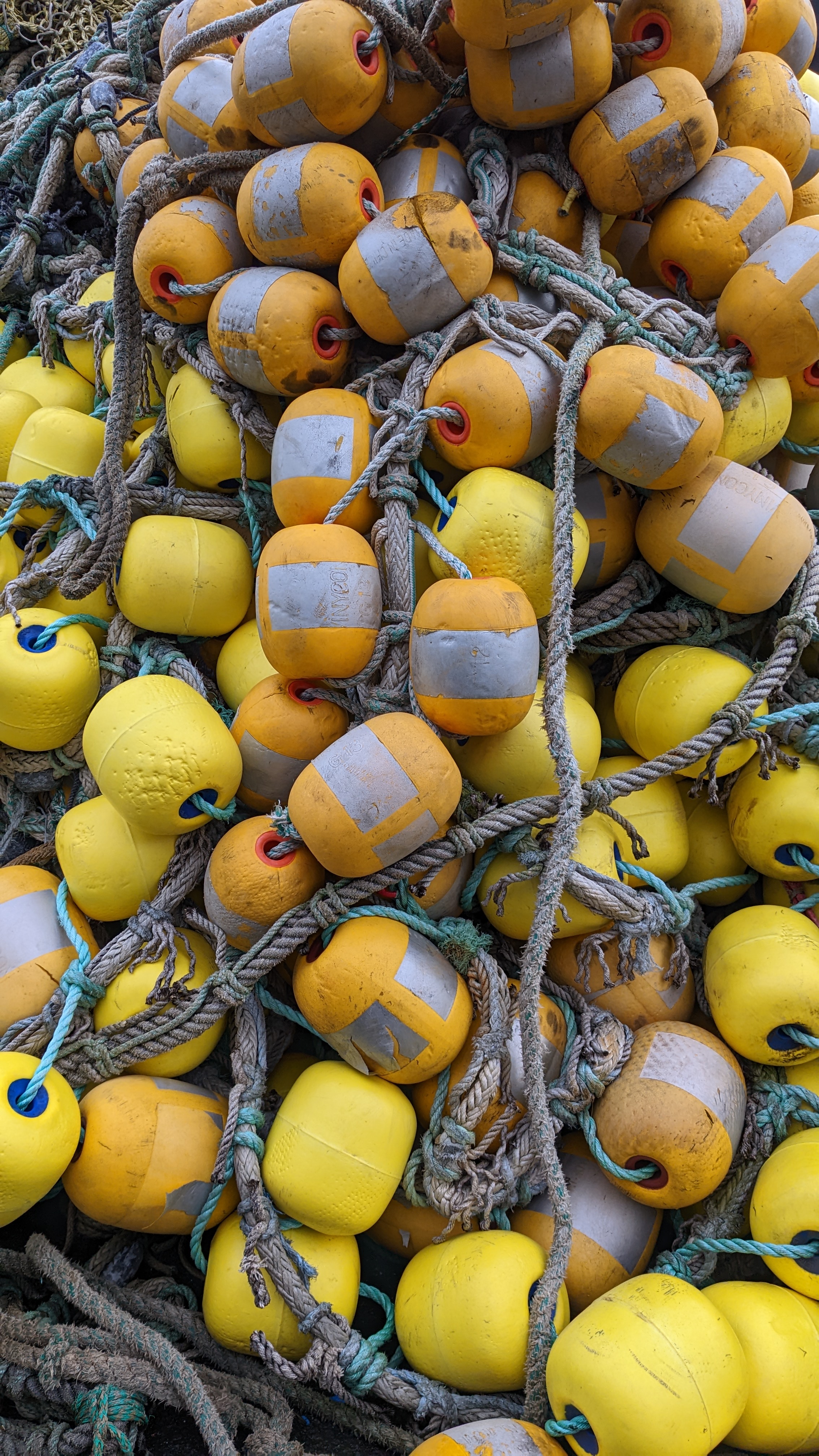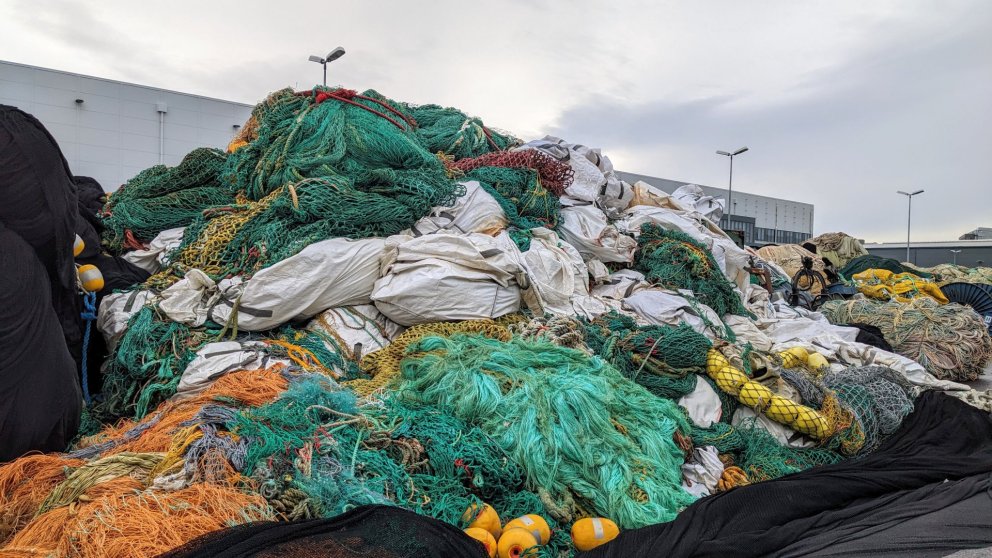- Research
- Fish tagging
- Lumpfish research
- Oceanography
- Seabed mapping
- Arnarfjörður
- Drekasvæði
- Ísafjarðardjúp
- Jökulbanki
- Jökuldjúp
- Kolbeinseyjarhryggur and adjacent area
- Kolluáll
- Langanesgrunn
- Látragrunn
- Nesdjúp
- Reykjaneshryggur and adjacent area
- Selvogsbanki
- South of Selvogsbanki
- South of Skeiðarárdjúp
- South of Skerjadjúp
- Southeast of Lónsdjúp
- Southwest of Jökuldjúp
- Suðausturmið
- Suðurdjúp
- Vesturdjúp
- East of Reykjaneshryggur
- Vestfjardarmid
- Seal research
- Whale Research
- Advice
- About
New roadmap to tackle fishing gear plastic waste
28. April 2025
The Nordic Council of Ministers published recently The Circular Economy of Fishing Gear in Nordic Fisheries (TemaNord 2025:544). It is the outcome of a Pan-Nordic project funded by AG-Fish under the Council’s auspices, led by the Marine and Freshwater Research Institute (MFRI). The project was chaired by fisheries scientist Haraldur Arnar Einarsson, who is also the lead author of the report, and co-authored by Augusta Jeremiassen, Meinhard Gaardlykke, Georg Haney and Gjermund Langedal. This study examines how end-of-life fishing gear, or parts of it, is managed in Greenland, Iceland, the Faroe Islands and Norway. It sets region-specific guidelines for reducing plastic waste and ghost fishing by embedding circular-economy principles throughout each fishing gear’s lifecycle.
 The report finds that fishing gear, made mainly from durable synthetic polymers such as nylon, polypropylene and polyethylene, often wears out or is lost in use, imposing financial costs on operators and significant plastic pollution. All four Nordic countries have substantially improved their collection of old fishing gear, albeit via different methods: in Greenland, empty containers on return voyages are used to bring old nets back from remote settlements; Iceland utilises its Recycling Fund and local netlofts to dismantle and sort gear; the Faroe Islands rely on local netlofts to prepare fishing gear for shipment to recycling facilities; and Norway pioneered a mandatory loss-reporting system and has carried out annual recovery expeditions for lost gear on fishing grounds for decades. However, none of the countries track fishing gear from the point of purchase to final disposal or recycling.
The report finds that fishing gear, made mainly from durable synthetic polymers such as nylon, polypropylene and polyethylene, often wears out or is lost in use, imposing financial costs on operators and significant plastic pollution. All four Nordic countries have substantially improved their collection of old fishing gear, albeit via different methods: in Greenland, empty containers on return voyages are used to bring old nets back from remote settlements; Iceland utilises its Recycling Fund and local netlofts to dismantle and sort gear; the Faroe Islands rely on local netlofts to prepare fishing gear for shipment to recycling facilities; and Norway pioneered a mandatory loss-reporting system and has carried out annual recovery expeditions for lost gear on fishing grounds for decades. However, none of the countries track fishing gear from the point of purchase to final disposal or recycling.
 Key challenges identified include the fragmentation of gear (ropes, lines and net fragments) during use, mixed-material components that complicate recycling, and the absence of harmonised marking and traceability systems. The report warns that once fragments break off, they are almost impossible to recover but continue to harm marine ecosystems and seabird colonies, such as gannets, and calls for more research into biodegradable materials and cleaner fishing methods.
Key challenges identified include the fragmentation of gear (ropes, lines and net fragments) during use, mixed-material components that complicate recycling, and the absence of harmonised marking and traceability systems. The report warns that once fragments break off, they are almost impossible to recover but continue to harm marine ecosystems and seabird colonies, such as gannets, and calls for more research into biodegradable materials and cleaner fishing methods.
To address these gaps, the authors propose twelve practical measures, among them:
- Mandatory marking of all fishing gear with owner identifiers.
- Establishment of a central digital registry tracking gear from purchase to end-of-life.
- A standardised loss-reporting system coupled with annual retrieval missions.
- Harmonisation of Nordic regulations and investment in local recycling infrastructure, especially in Iceland, the Faroes and Greenland.
- Financial incentives for fishers to return plastic from fishing gear for recycling and develop designs better suited to circular economy management.

